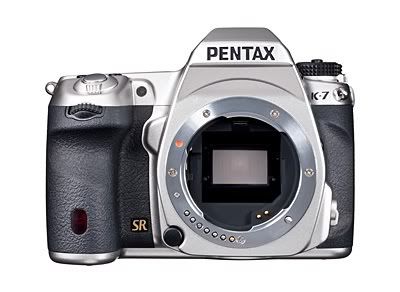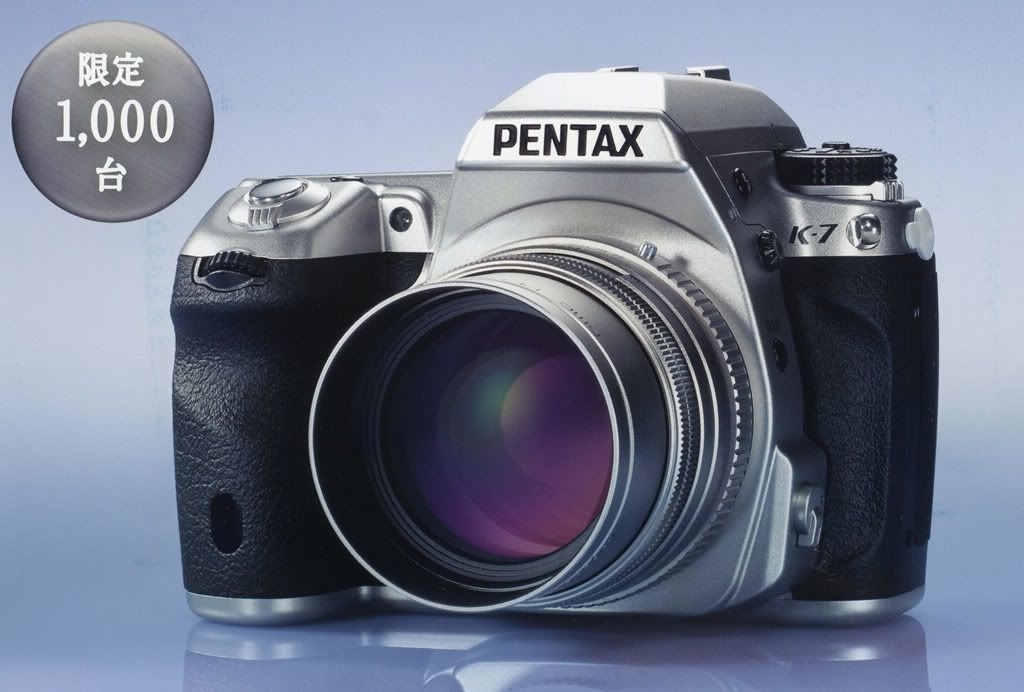The following are lens review sites that I read. I found all of them are useful and their tests are of good reference values in certain areas. If you like to measurbate and compare endlessly before you buy (or just like me doing endless measurbations after the purchase! ;=>), go to explore those sites with plenty of your valuable time in your life! ;-D (Well, just don't blame me for wasting your time in your life afterwards or when you grow old and look back! :-))
1. SLR Gear.com (by the Imaging Resource)
Main Page: http://www.slrgear.com/reviews/index.php
Pentax Page: http://www.slrgear.com/reviews/showcat.php/cat/44
2. PhotoZone
Main Page: http://www.photozone.de/reviews
Pentax Page: http://www.photozone.de/Reviews/overview#pentax
3. Dpreview
Main Page: http://www.dpreview.com/lensreviews/
Pentax Page: No Pentax Page (nor for any other brands as well, anyway)
4. LensTip.com (English translated reports, tests originally by the Polish Optyczne.pl)
Main Page: http://lenstip.com/lenses_reviews.html
Pentax Page: http://lenstip.com/index.html?test=obiektywu&producent=13&model=&typ=0&moc=0&przetest=1&szukaj=Search
Do note that for most of the time absolute figures should not be compared across different testing systems of different review sites, but in contrast the overall results could be. After all, the exact figures should be compared amongst each others with the same "ruler" for measurement, i.e. amongst the tests done by the same site (and with the same DSLR body). For example, the distortion figures in percentage could be much different for the same lens model under different tests, but if you are to compare the test figures of other lens models within the same testing system/procedures, you would probably be able to draw similar conclusions on the strengths and weaknesses of a particular lens, relatively speaking, even though you are to do a similar comparison for other lenses that you are interested in at another review site(s).
Enjoy!
• News about Products and Latest Company Direction
• Summaries of Reported Problems and Potential Issues
• Technical Articles on Photographic Gear and Technologies
Friday, February 26, 2010
Monday, February 22, 2010
K-7 Limited Silver



A new colour of the K-7 is coming. It's a limited edition:-
http://www.pentax.jp/japan/news/2010/201004.html
(in Japanese)
It will be on sales on March 13 and 1,000 units will be manufactured and sold.
From the past experiences, I bet the K-7 model will come to an end and replacement model will soon follow. That happened exactly with the K20D and K-m, when their Silver and Olive Limited Editions had come - and shortly afterwards replacement models arrived.
Sunday, February 21, 2010
Made ("Assembled") In Vietnam
It is somehow interesting to continue learn that Pentax is still making some of their classic old lenses at their Vietnam factory, which were actually announced to be discontinued elsewhere in the world long time ago. Recent news:-
http://www.pentaxforums.com/forums/pentax-news-rumors/90388-assembled-vietnam-pentax-a50mm-1-2-a.html
http://ricehigh.blogspot.com/2009/11/only-pentax-af-tc-made-so-far-smc-f-17x.html
That shows that Pentax is still keeping the design and more importantly the parts for manufacturing these. But however, those products are restricted to supply only to the Japanese home market only. Well, maybe those particular MIV lenses are still containing Lead and as such they cannot be sold to the EU countries (or even the States?).
In fact, old lenses that contain the Lead (Oxide) produce superior images than the new ones that are supposed to be Lead Free. I can conclude that quite surely with the new MIV FA 31 that I borrowed from Fred and when it is compared to the early production FA 31 that was made in Japan (but not the later MIJ version).
Read Also:-
Where Are the FA Limiteds Made Now?
When the Old is Unmatched by the New..
Where are the Pentax DSLRs and Lenses Made?
Thursday, February 18, 2010
New K-7 Firmware V1.03
It's official, of course. See:-
First Posted: http://www.pentax.se/se/news/1274/news.html
(Or the Google Translated Page Here)
http://www.pentax.jp/english/support/digital/k-7_s.html
What's New then?
1. Now supports distortion and CA corrections for the FA Limiteds (31, 43 and 77);
2. Better algorithm for auto horizon correction (? - The English is not so understoodable);
3. Improved compatibility with some SD cards.
First Posted: http://www.pentax.se/se/news/1274/news.html
(Or the Google Translated Page Here)
http://www.pentax.jp/english/support/digital/k-7_s.html
What's New then?
1. Now supports distortion and CA corrections for the FA Limiteds (31, 43 and 77);
2. Better algorithm for auto horizon correction (? - The English is not so understoodable);
3. Improved compatibility with some SD cards.
Re-published: My K100D Review
My K100D Review Re-published - Article of August 2006:-
http://ricehigh.atspace.com/K100D_Review/RiceHighs_Pentax_K100D_Full_Review.html
Read Also:-
My K-x Review is Here! (with Measurbations, Tips and Tricks)
My K-m Review, Tips and Tricks
http://ricehigh.atspace.com/K100D_Review/RiceHighs_Pentax_K100D_Full_Review.html
Read Also:-
My K-x Review is Here! (with Measurbations, Tips and Tricks)
My K-m Review, Tips and Tricks
Wednesday, February 17, 2010
Measurbation with Real-world Photos II
Further to my Measurbation with Real-world Photos last time with my Olive K-m, I continue to measurbate my Navy K-x in a similar way by doing real-life shootings and endless and repeated measurbations at the same time! ;-D
I post one latest example produced by my K-x produced with its in-camera JPEG engine, which is a night scene this time, EXIF data preserved, lens used is my early Japanese production FA 43 Limited:-

(Click to Enlarge to 4,000 Pixels in Width, a New Tab/Window Will be Opened)
Happy pixel peeling! Well, it can be seen that my Limited lens actually exceeds the K-x in resolution. So, I am still waiting for a better Pentax DSLR as such! ;->
I post one latest example produced by my K-x produced with its in-camera JPEG engine, which is a night scene this time, EXIF data preserved, lens used is my early Japanese production FA 43 Limited:-

(Click to Enlarge to 4,000 Pixels in Width, a New Tab/Window Will be Opened)
Happy pixel peeling! Well, it can be seen that my Limited lens actually exceeds the K-x in resolution. So, I am still waiting for a better Pentax DSLR as such! ;->
Friday, February 12, 2010
Re-published: K Mount Metering and Exposure Bases
A Technical Brief:-
http://ricehigh.atspace.com/The_K_Mount/K_Mount_Metering_Exposure_Bases.html
(First Published: June 2005)
http://ricehigh.atspace.com/The_K_Mount/K_Mount_Metering_Exposure_Bases.html
(First Published: June 2005)
Wednesday, February 10, 2010
Official 645D Teaser is There!
http://www.camera-pentax.jp/new/index.html
But it seems to be still Under Construction.. And, Well..
Read Also:-
Unofficial K-7 Teaser is Here!
Official New K Teasers Up and More Leaks Coming!
But it seems to be still Under Construction.. And, Well..
Read Also:-
Unofficial K-7 Teaser is Here!
Official New K Teasers Up and More Leaks Coming!
Tuesday, February 09, 2010
Pentax SR Performance Tested and Compared (K-x Against Canon IS)
Updated (2-10): My Observations on the Results Added!
Well, people continue to complain about the vigorous mirror slap and the low SR performance of the K-x. Here are yet two recent examples:-
http://forums.dpreview.com/forums/read.asp?forum=1036&message=34466669
http://forums.dpreview.com/forums/read.asp?forum=1036&message=34474541
I think it is of no harm to check my current K-x against one of my Canon L lenses for a SR Vs IS Shootout and comparison. I would pick my 24-105 L and mounted it on my 5D to test it against the K-x with the DAL 18-55 kit lens mounted .
Now, the test procedures and conditions are as below, followed by the results as tabulated:-
1. The 24-105 L is zoomed at 70mm, in-lens IS turned on, 3 shots were taken handheld for each of the Shutter Speeds in Tv Mode at 1/30, 1/15, 1/8 and 1/4th of a second, that is, -1.222, -2.222, -3.222 and -4.222 Stops (S)lower than the Theoretical Safety Shutter Speed Limit of 1/70s, Respectively;
2. The 18-55 DAL is zoomed at 45mm (Effective AOV near 70mm 135 FF equivalent), in-body SR turned on, 3 shots were taken handheld for each of the Shutter Speeds in Tv Mode at 1/30, 1/15, 1/8 and 1/4th of a second, that is, -1.222, -2.222, -3.222 and -4.222 Stops (S)lower than the Theoretical Safety Shutter Speed Limit of 1/70s, Respectively;
3. Other Settings: Tungsten Preset WB (Light Source: Pure Tungsten, Philips Bulbs), ISO 800, Single AF Mode with Central Point, All EXIF Preserved;
4. I tried my best to stand straight, hold my breath, hold the cameras and took the shots. The pictures are obtained as below, which are all resized to 2592 pixels in width at the Same Size. It is therefore there are 3 x 4 pictures for each of the cameras. So we have 12 x 2 pictures in total for two cameras. You can click on any of the thumbnails to view the Large Picture, a new Window/Tab will be opened. Endless Measurbation begins! :-D
Well, your Conclusion(s)? :->
P.S. My current K-x unit is already the best in terms of mirror slap vibration amongst the 3 K-x units that I have touched, used and tested so far. This is of nothing scientific, though, but just personal observation and impression of mine. You can take my this remark as a grain of salts anyway. But on the other hand, the above test should have shaded some light on how the Pentax SR system is performed and compared.
Well, people continue to complain about the vigorous mirror slap and the low SR performance of the K-x. Here are yet two recent examples:-
http://forums.dpreview.com/forums/read.asp?forum=1036&message=34466669
http://forums.dpreview.com/forums/read.asp?forum=1036&message=34474541
I think it is of no harm to check my current K-x against one of my Canon L lenses for a SR Vs IS Shootout and comparison. I would pick my 24-105 L and mounted it on my 5D to test it against the K-x with the DAL 18-55 kit lens mounted .
Now, the test procedures and conditions are as below, followed by the results as tabulated:-
1. The 24-105 L is zoomed at 70mm, in-lens IS turned on, 3 shots were taken handheld for each of the Shutter Speeds in Tv Mode at 1/30, 1/15, 1/8 and 1/4th of a second, that is, -1.222, -2.222, -3.222 and -4.222 Stops (S)lower than the Theoretical Safety Shutter Speed Limit of 1/70s, Respectively;
2. The 18-55 DAL is zoomed at 45mm (Effective AOV near 70mm 135 FF equivalent), in-body SR turned on, 3 shots were taken handheld for each of the Shutter Speeds in Tv Mode at 1/30, 1/15, 1/8 and 1/4th of a second, that is, -1.222, -2.222, -3.222 and -4.222 Stops (S)lower than the Theoretical Safety Shutter Speed Limit of 1/70s, Respectively;
3. Other Settings: Tungsten Preset WB (Light Source: Pure Tungsten, Philips Bulbs), ISO 800, Single AF Mode with Central Point, All EXIF Preserved;
4. I tried my best to stand straight, hold my breath, hold the cameras and took the shots. The pictures are obtained as below, which are all resized to 2592 pixels in width at the Same Size. It is therefore there are 3 x 4 pictures for each of the cameras. So we have 12 x 2 pictures in total for two cameras. You can click on any of the thumbnails to view the Large Picture, a new Window/Tab will be opened. Endless Measurbation begins! :-D
Well, your Conclusion(s)? :->
P.S. My current K-x unit is already the best in terms of mirror slap vibration amongst the 3 K-x units that I have touched, used and tested so far. This is of nothing scientific, though, but just personal observation and impression of mine. You can take my this remark as a grain of salts anyway. But on the other hand, the above test should have shaded some light on how the Pentax SR system is performed and compared.
Better K-x Rechargable Solution? Is the NiZn Safe?
In my last K-x review, the "battery issue" of K-x is confirmed. But after I have used my two different units of K-x for even longer, I found that the original firmware is not buggy, it is just more *accurate* and thus actually more sensitive! (My last Navy K-x was replaced owing to the minor technical problems I found, e.g., Slight Underexposure and Back Focusing etc., which I have already overcome anyway, see my last review and this previous blog article, respectively. But anyway I am very glad that my brand new replacement unit is totally trouble free and is very accurate, for both the metering/exposure and the focusing! :-D)
Well, now the best usable NiMH set of mine are measured actually of higher voltage over 1.3V each when fully charged, which just shows a green battery indicator in my K-xes with Firmware V1.00. With latest "debugged" Firmware V1.01, the battery indicator is de-sensitized, i.e., more tolerance is added and allowed. So, I opted Not to Update the Firmware as such as I just want a more precise and accurate battery meter rather than a battery indicator with more tolerance!
Now, here comes the headache again, as usual with any Pentax DSLRs powered by AA batteries: Rechargable NiMHs are of significantly lower voltage and just the camera's actual performance is affected and the camera is slowened. The most obvious thing is the less powerful AF motor drive and slower speed of it when NiMH is used, which is very obvious when it is compared against the AA Lithium. In fact, I have measured the continuous drive mode frame advance rate of my K-x, which is of just 4.0 fps with freshly charged Eneloops and yet is considerably less than what is specified in the K-x Specs, i.e. 4.7 fps. (Also, to see how different battery types could affect the AF motor speed, see my last experiment with the K-m).
( P.S. Just discovered that my shared file links in my test reports are not working with my Google Docs, as I have to assign the emails of persons whom are allowed to download my files but it is not possible to share my files openly. As I have cancelled my Yahoo Web Hosting account, grateful if anyone could advise me of any Free Web-hosting account that I can register for hosting the small non-image files that I had in my reviews, e.g., the sound files and also some old html tables. TIA! )
Now, here comes the latest battery technology and solution of Ni-Zn rechargeables, which is now newly available in AA form factor by the PowerGenix. The battery is of 1.6V nominal voltage as specified and as seen in the above link, the Internal Resistance is marked as less than 4.5 mOhms whereas more than 5 Ohms for both NiMH and NiCd.
Next, people are concerning about If the Ni-Zn is Safe when using in the K-x (or any other Pentax AA DSLRs)? Well, as in the last paragraph, I have actually already mentioned the two key important battery parameters that we should know before that a conclusion can be drawn.
First, the Ni-Zn is very similar to the Energizer AA Lithium (L91, datasheet here). I measured the starting voltage of my L91s is roughly at 1.70V and will gradually decrease to just below 1.50V before they die. Similarly, as some new users of Ni-Zn reported (search those at the DPR Pentax SLR Forum), the initial voltage of the Ni-Zn is something around 1.72/1.73V and the battery will run out of juice at around 1.56V. So, the voltage discharge curves/characteristics of both types of battery are very similar.
As our K-x can use L91 quite safe as it is official certified (and bundled new in the box as well), what left to be concerned is the Internal Resistance of the new type battery..
From the above L91 datasheet, it is found that the Internal Resistance of the L91 is actually relatively much higher than that of the NiMH rechargables, which is specified at 90 to 150 mOhms for the L91.
So, how we have two choices that is known to be safe and official, i.e., Either a Low Voltage at 1.2V nominal with a Low Internal Resistance at about 5 mOhms, Or, a Higher Voltage at 1.6V nominal with a *Much Higher* Internal Resistance at about 90 to 150 mOhms! (As for AA Alkalines, the voltage is just lower than the L91 and the Internal Resistance is just higher, rated at 150 to 300 mOhms (See this Datasheet). So, it can just be ignored in this case.)
The Ni-Zn is a new type battery with *Both* a Higher Voltage and a Very Low Internal Resistance. I just wonder if it is safe to use in our K-x, as the battery do not limit current itself at a relatively (much) higher operating voltage (in 33.3%+).
Do also note the simply Physics Equation of Power is that: Power is equal to the Square of Voltage which is to be divided by the total Resistance of the circuit, the final Power dissipated could be tremendously different if the circuit is designed to limit the current somehow by taking account into the (High) Internal Resistance of the batteries at higher voltage (in case of the L91).
There was once a report that a Pentax user just fired his Pentax 360 Flashgun with the Ni-Zn batteries, just within a few second during charging. So, I think I should warn that the Ni-Zn batteries should not be tried in our DSLRs after my research and analyses above! In particular, I bet the new-type batteries could damage the flash circuitry, similar to the 360 burnt flash case as reported.
But then, after all, the battery issue of the Pentax AA DSLRs remains unresolved - after so many years: We, Pentax AA battery DSLR users, could Either use Disposal L91 which provides Higher Performance for our cameras, Or, Rechargeables which provides Lower Performance and also a persistent "half-depleted" Yellow battery warning and indicator for a prolonged period of time, which just defeat the purpose of the battery warning but it does actually reflect the truth (i.e., the battery voltage level is usually at the border line)!
All in all, we just CAN'T get the Best of Both World. If you want to get it, the risky way is only the Ni-Zn, which from the battery specifications, as compared against the L91 and the NiMH's, is actually not recommended by me, as a Professional Electrical/Electronics Engineer, at least!
P.P.S. I am glad that I might be the first person on the Web to do this might be simple research and quick analyses and then to conclude that the Ni-Zn is NOT Safe for our Pentax DSLRs, after so many people are wondering or even trying if the Ni-Zn is Safe to use or Not. :-) =V=
Asking Pentax Technical Support is useless for this case, I would say, as what they would tell you is they are unsure and that it is not told by their principal! (Search also those user reports at the DPR just in case if you want to see them.)
Well, now the best usable NiMH set of mine are measured actually of higher voltage over 1.3V each when fully charged, which just shows a green battery indicator in my K-xes with Firmware V1.00. With latest "debugged" Firmware V1.01, the battery indicator is de-sensitized, i.e., more tolerance is added and allowed. So, I opted Not to Update the Firmware as such as I just want a more precise and accurate battery meter rather than a battery indicator with more tolerance!
Now, here comes the headache again, as usual with any Pentax DSLRs powered by AA batteries: Rechargable NiMHs are of significantly lower voltage and just the camera's actual performance is affected and the camera is slowened. The most obvious thing is the less powerful AF motor drive and slower speed of it when NiMH is used, which is very obvious when it is compared against the AA Lithium. In fact, I have measured the continuous drive mode frame advance rate of my K-x, which is of just 4.0 fps with freshly charged Eneloops and yet is considerably less than what is specified in the K-x Specs, i.e. 4.7 fps. (Also, to see how different battery types could affect the AF motor speed, see my last experiment with the K-m).
( P.S. Just discovered that my shared file links in my test reports are not working with my Google Docs, as I have to assign the emails of persons whom are allowed to download my files but it is not possible to share my files openly. As I have cancelled my Yahoo Web Hosting account, grateful if anyone could advise me of any Free Web-hosting account that I can register for hosting the small non-image files that I had in my reviews, e.g., the sound files and also some old html tables. TIA! )
Now, here comes the latest battery technology and solution of Ni-Zn rechargeables, which is now newly available in AA form factor by the PowerGenix. The battery is of 1.6V nominal voltage as specified and as seen in the above link, the Internal Resistance is marked as less than 4.5 mOhms whereas more than 5 Ohms for both NiMH and NiCd.
Next, people are concerning about If the Ni-Zn is Safe when using in the K-x (or any other Pentax AA DSLRs)? Well, as in the last paragraph, I have actually already mentioned the two key important battery parameters that we should know before that a conclusion can be drawn.
First, the Ni-Zn is very similar to the Energizer AA Lithium (L91, datasheet here). I measured the starting voltage of my L91s is roughly at 1.70V and will gradually decrease to just below 1.50V before they die. Similarly, as some new users of Ni-Zn reported (search those at the DPR Pentax SLR Forum), the initial voltage of the Ni-Zn is something around 1.72/1.73V and the battery will run out of juice at around 1.56V. So, the voltage discharge curves/characteristics of both types of battery are very similar.
As our K-x can use L91 quite safe as it is official certified (and bundled new in the box as well), what left to be concerned is the Internal Resistance of the new type battery..
From the above L91 datasheet, it is found that the Internal Resistance of the L91 is actually relatively much higher than that of the NiMH rechargables, which is specified at 90 to 150 mOhms for the L91.
So, how we have two choices that is known to be safe and official, i.e., Either a Low Voltage at 1.2V nominal with a Low Internal Resistance at about 5 mOhms, Or, a Higher Voltage at 1.6V nominal with a *Much Higher* Internal Resistance at about 90 to 150 mOhms! (As for AA Alkalines, the voltage is just lower than the L91 and the Internal Resistance is just higher, rated at 150 to 300 mOhms (See this Datasheet). So, it can just be ignored in this case.)
The Ni-Zn is a new type battery with *Both* a Higher Voltage and a Very Low Internal Resistance. I just wonder if it is safe to use in our K-x, as the battery do not limit current itself at a relatively (much) higher operating voltage (in 33.3%+).
Do also note the simply Physics Equation of Power is that: Power is equal to the Square of Voltage which is to be divided by the total Resistance of the circuit, the final Power dissipated could be tremendously different if the circuit is designed to limit the current somehow by taking account into the (High) Internal Resistance of the batteries at higher voltage (in case of the L91).
There was once a report that a Pentax user just fired his Pentax 360 Flashgun with the Ni-Zn batteries, just within a few second during charging. So, I think I should warn that the Ni-Zn batteries should not be tried in our DSLRs after my research and analyses above! In particular, I bet the new-type batteries could damage the flash circuitry, similar to the 360 burnt flash case as reported.
But then, after all, the battery issue of the Pentax AA DSLRs remains unresolved - after so many years: We, Pentax AA battery DSLR users, could Either use Disposal L91 which provides Higher Performance for our cameras, Or, Rechargeables which provides Lower Performance and also a persistent "half-depleted" Yellow battery warning and indicator for a prolonged period of time, which just defeat the purpose of the battery warning but it does actually reflect the truth (i.e., the battery voltage level is usually at the border line)!
All in all, we just CAN'T get the Best of Both World. If you want to get it, the risky way is only the Ni-Zn, which from the battery specifications, as compared against the L91 and the NiMH's, is actually not recommended by me, as a Professional Electrical/Electronics Engineer, at least!
P.P.S. I am glad that I might be the first person on the Web to do this might be simple research and quick analyses and then to conclude that the Ni-Zn is NOT Safe for our Pentax DSLRs, after so many people are wondering or even trying if the Ni-Zn is Safe to use or Not. :-) =V=
Asking Pentax Technical Support is useless for this case, I would say, as what they would tell you is they are unsure and that it is not told by their principal! (Search also those user reports at the DPR just in case if you want to see them.)
Saturday, February 06, 2010
(AF) Lens Matching with the Navy K-x
All Original Pentax AF Lenses of mine which are of different generations and aesthetic designs but still provide Full Auto Functions for my K-x!
In Chronological Order..
F:-

F*:-

FA:-

FA*:-

FA Limited:-

FA (2nd Generation):-

FAJ:-

DFA:-

DAL:-

Wow..! Look like this Porsche? ;-D As Smart and Beautiful!

See Also: K-m Olive Colour Matching
In Chronological Order..
F:-

F*:-

FA:-

FA*:-

FA Limited:-

FA (2nd Generation):-

FAJ:-

DFA:-

DAL:-

Wow..! Look like this Porsche? ;-D As Smart and Beautiful!

See Also: K-m Olive Colour Matching
Monday, February 01, 2010
K-x Body Vibration Issue - Case Studies
In my last K-x review, I reported that the K-x is a Shake Addition (!) DSLR as found practically in the field with more blurred pictures were resulted when shot handheld at lower light. Today, I've come across two posts and test demonstrations with comparison pictures posted at the DPR Pentax forum that other K-x users do find similar problem (but of different phenomenons and possible causes, will discuss a bit more below..).
First of all, the OP of the thread below found that his K-m is consistently more stable than his K-x:-
http://forums.dpreview.com/forums/read.asp?forum=1036&message=34327386
He then concluded that it's the serious mirror slap vibration the culprit, as SR can reduce and compensate for the vibration somehow after the SR was turned on, in his test.
Then, in the same thread, another poster reported the "same", just for the Shake Addition tendency of the K-x, but not for the same reason and cause as found:-
http://forums.dpreview.com/forums/read.asp?forum=1036&message=34330249
Interestingly, the second K-x user who posted found that it's the SR the culprit, but not the vigorous mirror slap, if any!
Well, here is the 3rd K-x user who can give his comments, i.e., me! :-) I found that the mirror slap of the K-x is not as gentle as the K-m and actually cause more vibration. I did also find, for times, that the K-x' SR is not as good and effective as the K-m's. But I do not think neither my K-x behaves as extreme as what the above users' K-xes do for both the mirror vibration and the SR (a bug or defective sample?).
While this K-x Shake Addition Issue is yet to be investigated further, it is just so difficult to predict its behaviour(s) and it seems that different units and different samples do vary in an erratic way, which is No Good and actually a really bad thing as there are issues anyway. :-(
First of all, the OP of the thread below found that his K-m is consistently more stable than his K-x:-
http://forums.dpreview.com/forums/read.asp?forum=1036&message=34327386
He then concluded that it's the serious mirror slap vibration the culprit, as SR can reduce and compensate for the vibration somehow after the SR was turned on, in his test.
Then, in the same thread, another poster reported the "same", just for the Shake Addition tendency of the K-x, but not for the same reason and cause as found:-
http://forums.dpreview.com/forums/read.asp?forum=1036&message=34330249
Interestingly, the second K-x user who posted found that it's the SR the culprit, but not the vigorous mirror slap, if any!
Well, here is the 3rd K-x user who can give his comments, i.e., me! :-) I found that the mirror slap of the K-x is not as gentle as the K-m and actually cause more vibration. I did also find, for times, that the K-x' SR is not as good and effective as the K-m's. But I do not think neither my K-x behaves as extreme as what the above users' K-xes do for both the mirror vibration and the SR (a bug or defective sample?).
While this K-x Shake Addition Issue is yet to be investigated further, it is just so difficult to predict its behaviour(s) and it seems that different units and different samples do vary in an erratic way, which is No Good and actually a really bad thing as there are issues anyway. :-(























